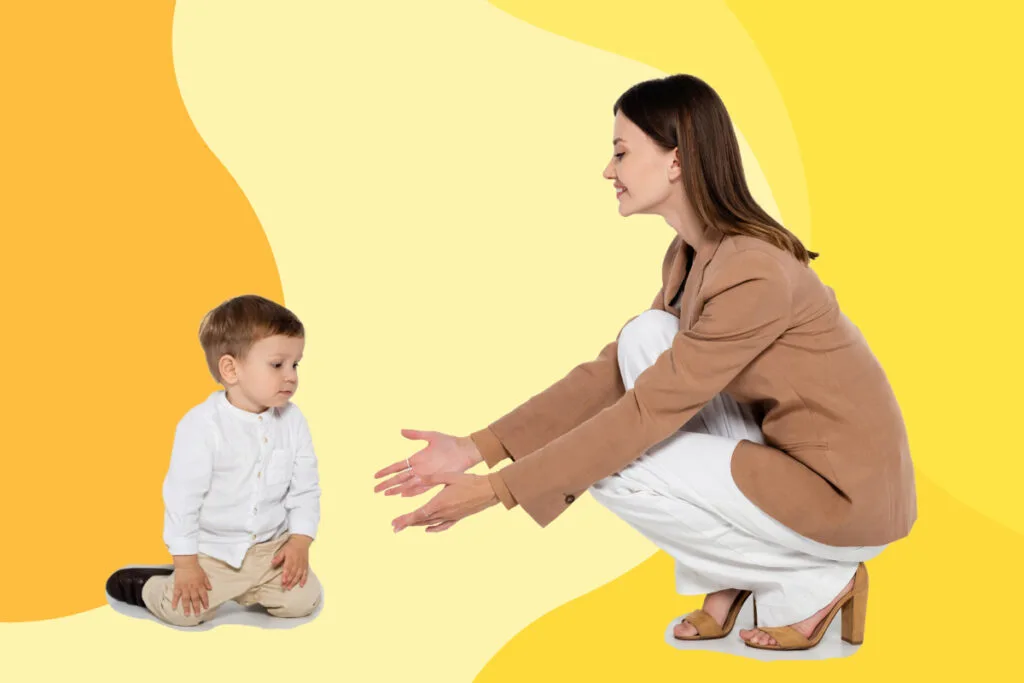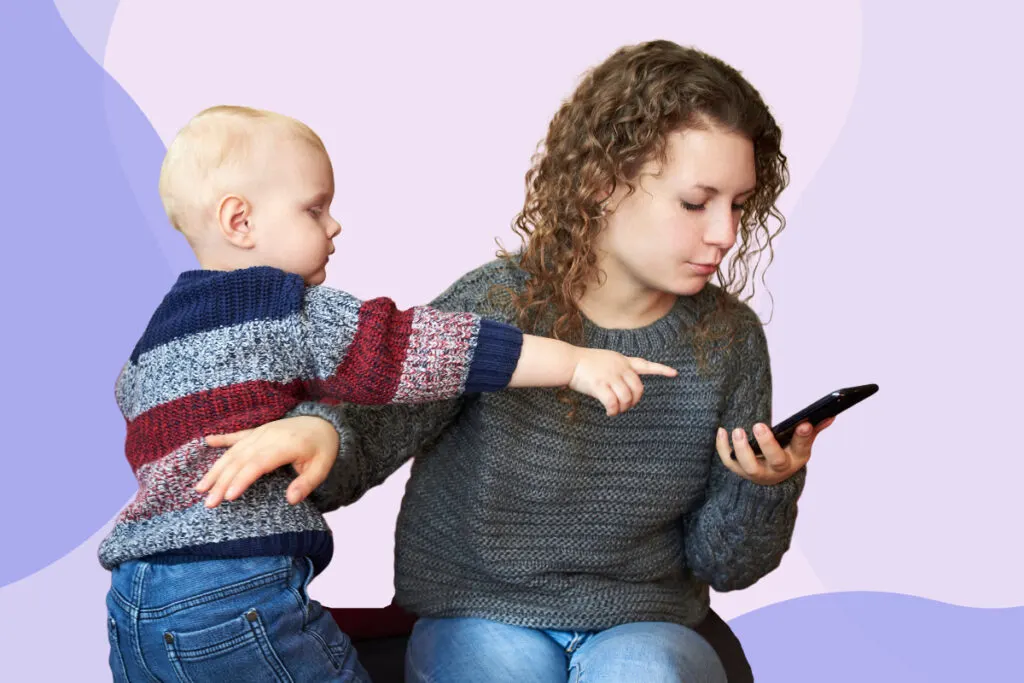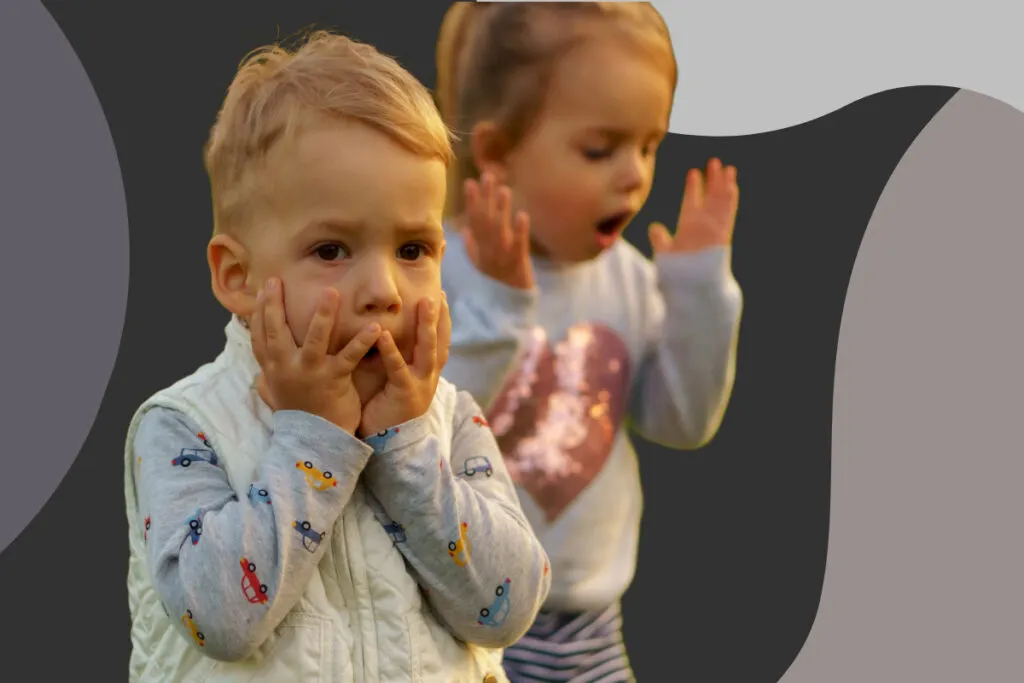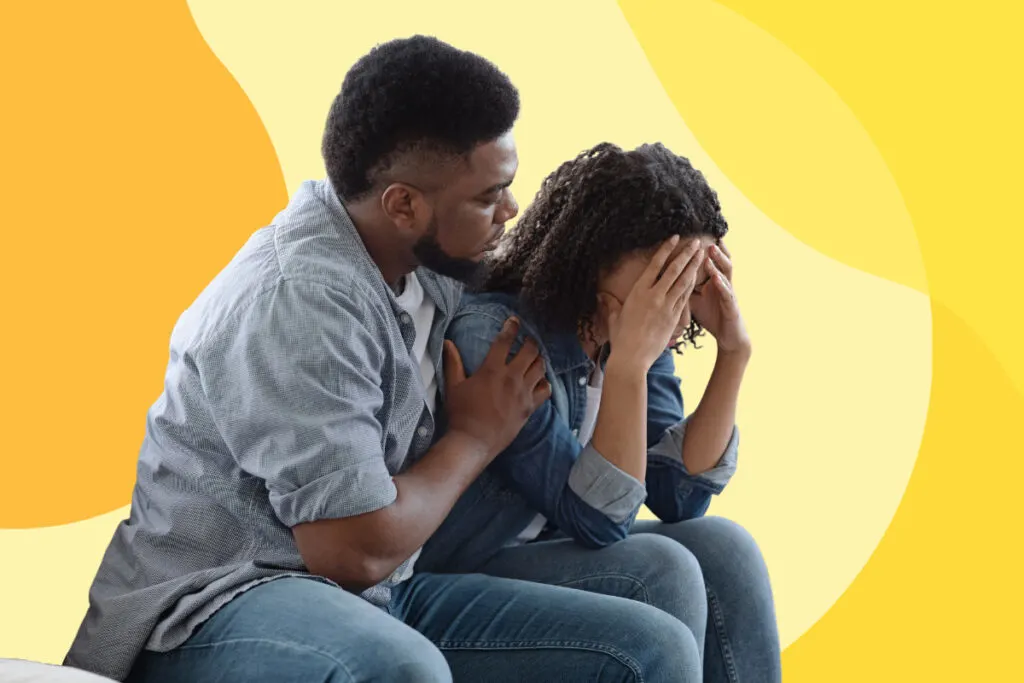- What is attachment anxiety
- Attachment theory
- Two-dimension model
- Attachment vs. general anxiety
- Causes
- Signs in children
- Signs in adults
- Healing for children
- Healing for adults
- How to help an anxious spouse
TABLE OF CONTENTS
- What is attachment anxiety
- Attachment theory
- The two dimensions of attachment styles
- What is the difference between attachment anxiety and general anxiety
- What causes attachment anxiety
- Signs of attachment anxiety behavior in childhood
- Signs of attachment anxiety in adulthood
- Healing attachment anxiety in children
- How to heal attachment anxiety in adults
- How to help an anxious spouse
- References
What is attachment anxiety
Attachment anxiety is the fear of being separated from loved ones such as parents, friends, and spouses. It corresponds to a negative working model of self-image and low self-esteem. People who suffer from it are chronically preoccupied with fear, vigilance, jealousy, and fear of abandonment. It is an insecure attachment style.1
While it is not fully understood what causes it, there appears to be an association between attachment anxiety and negative childhood experiences such as inconsistent parenting.
Anxious individuals often feel insecure in relationships and worry that the attachment figure will abandon them.
They have difficulty believing that others will be there for them in times of need, resulting in an insecure pattern of behavior.2

Attachment theory
The attachment theory framework is a psychological model that describes the nature of emotional attachment between infants and caretakers.
Psychiatrist John Bowlby first proposed it.
The theory has been extensively studied since then and expanded upon by other researchers, such as psychologist Mary Ainsworth.
According to attachment theory, infants are born with a fundamental need to feel safe and secure by being around their primary caregivers.
When babies feel threatened or scared, they cry and cling to caregivers.
A primary caregiver who is nurturing and responsive to the infant’s needs will foster confidence and a secure attachment style in the child.
Insecure attachment styles are formed when the caretaker is inconsistent, absent, or abusive.
In child development, attachment styles play an essential role.

The two dimensions of attachment styles
Using a two-dimensional model, the parent-child attachment relationship can be categorized by attachment-related anxiety and avoidance levels.
Individuals with high attachment anxiety levels are preoccupied with their relationships, and they fear abandonment.
Individuals with high avoidant styles are uncomfortable with closeness and intimacy.
It is common for them to suppress their feelings and not rely on others for support, even in distress.
They are more likely to develop an avoidant attachment.
Among highly anxious people, avoidance can be of different levels, resulting in different types of attachment.
An anxious person with low avoidance tends to develop an anxious attachment style.
An anxious person with high avoidance tends to develop a fearful-avoidant attachment style.

What is the difference between attachment anxiety and general anxiety
Attachment anxiety differs from general anxiety in that it stems from the intense fear of rejection or abandonment related to relationships while general anxiety can encompass a wide range of issues.
Some anxiously attached people may show anxiety in relationship-related issues but not other issues.

What causes attachment anxiety
The development of anxious attachment across childhood can be influenced by several factors.
Inconsistent parenting
If parents provide inconsistent care or are unresponsive, children learn that they cannot rely on their caretakers for consistency and support.
They lack a sense of security and feel unloved.
These children may become hypervigilant and show hyperactivation attachment behavior.3
Anxious parents
Parents with an anxious attachment themselves are likely to be preoccupied with the inconsistent care and accessibility of attachment figures in their own lives, leading to inconsistent parenting4.
Childhood emotional neglect
Attachment anxiety is more likely to develop in children who have suffered psychological abuse or emotional neglect.
The risk of developing attachment anxiety after early childhood maltreatment is higher for women than for men5.

Signs of attachment anxiety behavior in childhood
Anxiously attached children are preoccupied with the availability of attachment figures.
They show the following common signs:
- Appear clingy or needy, especially when distressed
- Worry about being rejected by parents or friends
- Have a people-pleasing tendency and crave acceptance by others
- Have doubts that parents will be available during distress
- Mental health issues such as the development of anxiety disorders and panic attacks6
- Have difficulty regulating negative emotions7
- More anxious at separation8

Signs of attachment anxiety in adulthood
Anxiously attached adults worry that their partners will reject them, leading them to seek closeness and intimacy compulsively.9
Individuals with adult attachment anxiety tend to show the following characteristics:
- Seek constant reassurance from their romantic partners
- Disclose personal information about themselves early on in adult relationships to elicit positive feedback and achieve intimacy quickly10
- Talk about their romantic relationships frequently during routine conversations with partners
- Anxious behavior, such as monitoring the availability of the partner vigilantly
- More extreme reactions and feelings of anxiety to an attachment relationship threat11
- Hypersensitive to what others think of them in close relationships or social interactions12
- Engage more actively on social media, eliciting likes or reactions from friends13
- Media influence associated with body image dissatisfaction is easily internalized, particularly by women14
- Higher revictimization rates among anxiously attached women who had received negative responses following childhood sexual abuse disclosure15
- More likely to develop clinical disorders, anxiety symptoms, or depressive symptoms16
- Emotion dysregulation17
- Rumination on real and potential threats7.

Healing attachment anxiety in children
Failure to form a secure attachment with a caregiver in childhood places children at risk for more negative outcomes18.
To rebuild trust, caregiver behaviors can be changed to respond consistently.
In addition to child-parent attachment relationships, children can become attached to a trusted adult, such as a school counselor or teacher, and develop an earned secure attachment.
Children with severe anxiety or attachment issues may need professional help.

How to heal attachment anxiety in adults
Insecure attachments to caregivers risk retaining insecure styles in adulthood.
However, insecure attachments in children do not necessarily translate to insecure attachments as they grow into adults.
Awareness of attachment style allows you to formulate a strategy for seeking help.
Secure relationships are necessary for healthy development and competent emotion regulation.
Attachment wounds heal over time with reliable comfort from attachment figures.
Attachment repair or new relationships take time.
Meanwhile, an experienced therapist or counselor can guide you in this process and provide support.
They can also help you make sense of your past to reconstruct a healthy internal representation of relationships.
Learn adaptive coping strategies that can improve the emotion regulation process. Exercise, meditation, and mindfulness improve moods and provide good self-care.

How to help an anxious spouse
People with attachment anxiety are hypersensitive to relationship threats, which may lead to less constructive behavioral responses.
They may show more hostility during conflicts and undermine relationship stability.
Nevertheless, studies show that anxious people feel better about their relationship when their partner is supportive or explicitly communicates affection.19
If you have an anxious partner, they may seem insecure and needy.
But with your patient’s help, they can develop a healthy relationship.
You can find help in this process through couple therapy.

References
- 1.Brenning K, Soenens B, Braet C, Bal S. The Role of Parenting and Mother-Adolescent Attachment in the Intergenerational Similarity of Internalizing Symptoms. J Youth Adolescence. Published online December 23, 2011:802-816. doi:10.1007/s10964-011-9740-9
- 2.Overall NC, Girme YU, Lemay EP, Hammond MD. Attachment anxiety and reactions to relationship threat: The benefits and costs of inducing guilt in romantic partners. Journal of Personality and Social Psychology. Published online February 2014:235-256. doi:10.1037/a0034371
- 3.Wearden A, Peters I, Berry K, Barrowclough C, Liversidge T. Adult attachment, parenting experiences, and core beliefs about self and others. Personality and Individual Differences. Published online April 2008:1246-1257. doi:10.1016/j.paid.2007.11.019
- 4.Ravitz P, Maunder R, Hunter J, Sthankiya B, Lancee W. Adult attachment measures: A 25-year review. Journal of Psychosomatic Research. Published online October 2010:419-432. doi:10.1016/j.jpsychores.2009.08.006
- 5.Briere J, Godbout N, Runtz M. The Psychological Maltreatment Review (PMR): Initial Reliability and Association with Insecure Attachment in Adults. Journal of Aggression, Maltreatment & Trauma. Published online April 2012:300-320. doi:10.1080/10926771.2012.659801
- 6.Esbjørn BH, Pedersen SH, Daniel SIF, Hald HH, Holm JM, Steele H. Anxiety levels in clinically referred children and their parents: Examining the unique influence of self-reported attachment styles and interview-based reflective functioning in mothers and fathers. Br J Clin Psychol. Published online July 2, 2013:394-407. doi:10.1111/bjc.12024
- 7.Mikulincer M, Shaver PR. Attachment orientations and emotion regulation. Current Opinion in Psychology. Published online February 2019:6-10. doi:10.1016/j.copsyc.2018.02.006
- 8.Eapen V, Dadds M, Barnett B, et al. Separation Anxiety, Attachment and Inter-Personal Representations: Disentangling the Role of Oxytocin in the Perinatal Period. Mazza M, ed. PLoS ONE. Published online September 17, 2014:e107745. doi:10.1371/journal.pone.0107745
- 9.Mikulincer M, Shaver PR. The Attachment Behavioral System In Adulthood: Activation, Psychodynamics, And Interpersonal Processes. Advances in Experimental Social Psychology. Published online 2003:53-152. doi:10.1016/s0065-2601(03)01002-5
- 10.Shaver PR, Schachner DA, Mikulincer M. Attachment Style, Excessive Reassurance Seeking, Relationship Processes, and Depression. Pers Soc Psychol Bull. Published online March 2005:343-359. doi:10.1177/0146167204271709
- 11.OVERALL NC, SIBLEY CG. Attachment and dependence regulation within daily interactions with romantic partners. Personal Relationships. Published online June 2009:239-261. doi:10.1111/j.1475-6811.2009.01221.x
- 12.Park LE, Crocker J, Mickelson KD. Attachment Styles and Contingencies of Self-Worth. Pers Soc Psychol Bull. Published online October 2004:1243-1254. doi:10.1177/0146167204264000
- 13.Hart J, Nailling E, Bizer GY, Collins CK. Attachment theory as a framework for explaining engagement with Facebook. Personality and Individual Differences. Published online April 2015:33-40. doi:10.1016/j.paid.2014.12.016
- 14.Cheng HL, Mallinckrodt B. Parental bonds, anxious attachment, media internalization, and body image dissatisfaction: Exploring a mediation model. Journal of Counseling Psychology. Published online July 2009:365-375. doi:10.1037/a0015067
- 15.Brenner I, Ben-Amitay G. Sexual Revictimization: The Impact of Attachment Anxiety, Accumulated Trauma, and Response to Childhood Sexual Abuse Disclosure. Violence Vict. Published online 2015:49-65. doi:10.1891/0886-6708.vv-d-13-00098
- 16.Wei M, Mallinckrodt B, Larson LM, Zakalik RA. Adult Attachment, Depressive Symptoms, and Validation From Self Versus Others. Journal of Counseling Psychology. Published online July 2005:368-377. doi:10.1037/0022-0167.52.3.368
- 17.BRENNING KM, BRAET C. The emotion regulation model of attachment:An emotion-specific approach. Personal Relationships. Published online April 4, 2012:107-123. doi:10.1111/j.1475-6811.2012.01399.x
- 18.Levy KN, Ellison WD, Scott LN, Bernecker SL. Attachment style. J Clin Psychol. Published online November 24, 2010:193-203. doi:10.1002/jclp.20756
- 19.Lemay EP, Dudley KL. Caution: Fragile! Regulating the interpersonal security of chronically insecure partners. Journal of Personality and Social Psychology. Published online 2011:681-702. doi:10.1037/a0021655
